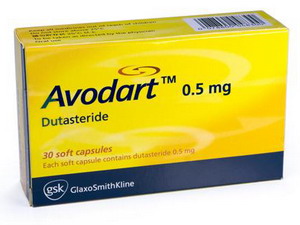Is Treating Hair Loss with Avodart (Dutasteride) Effective?
 For over a decade, [tag]balding[/tag] men have had two clinically proven options for treating their [tag]hair loss[/tag] medically. !n 1988, Rogaine (minoxidil) 2% Topical Solution for Men launched as a prescription medication. Men’s [tag]Rogaine[/tag] 5% Extra Strength Solution was approved for over-the-counter use in 1997. That same year, the FDA also approved [tag]finasteride[/tag] to treat male pattern baldness (MPB) under the brand name Propecia. When used in combination, [tag]minoxidil[/tag] and finasteride are still considered by many experts to be the best drug treatment for hair loss currently available.
For over a decade, [tag]balding[/tag] men have had two clinically proven options for treating their [tag]hair loss[/tag] medically. !n 1988, Rogaine (minoxidil) 2% Topical Solution for Men launched as a prescription medication. Men’s [tag]Rogaine[/tag] 5% Extra Strength Solution was approved for over-the-counter use in 1997. That same year, the FDA also approved [tag]finasteride[/tag] to treat male pattern baldness (MPB) under the brand name Propecia. When used in combination, [tag]minoxidil[/tag] and finasteride are still considered by many experts to be the best drug treatment for hair loss currently available.
However, over the past few years, some patients have begun to explore [tag]Avodart[/tag] ([tag]dutasteride[/tag]) as an alternative to finasteride. The reasons for this switch are varied. Some men hope that dutasteride will offer fewer side effects while others have simply not had success with [tag]Propecia[/tag] and are looking for something more effective. Whatever the reason, it is important to note that Avodart is currently not FDA approved for the treatment of [tag]male pattern balding[/tag]. So how does Avodart work? What are its side effects? How do you know if it’s time to make the switch?
Dutasteride, the active ingredient in Avodart is a 5-alpha-reductase inhibitor that inhibits the conversion of testosterone into dihydrotestosterone ([tag]DHT[/tag]). As most balding men can tell you, DHT is the hormone responsible for [tag]androgenic alopecia[/tag] or male pattern baldness. While Propecia (finasteride) only inhibits the Type II isoform of 5-alpha reductase, Avodart (dutasteride) blocks both Type I and Type II, potentially making it a more effective treatment for hair loss.
The downside to all this enhanced DHT blocking may be a greater risk of side effects. As with finasteride, common side effects of dutasteride include; erectile dysfunction, a decreased libido, abnormal ejaculation and male breast enlargement or tenderness. Patients who have experienced side effects on finasteride are just as likely if not more likely to experience the same side effects on Avodart.
So when should one consider taking Avodart instead of Propecia? Since Avodart has not yet been FDA approved for hair loss, most physicians are reluctant to prescribe it for this purpose. Those that do recommend it typically do so only when Propecia has not been effective. In other words, Avodart should be the last resort.
For more information or to share your experiences, join the following discussion on our enhanced hair restoration forum and social network.
—-
David – aka TakingThePlunge
Assistant Publisher and Forum Co-Moderator for the Hair Transplant Network, the Hair Loss Learning Center, the Hair Loss Q&A Blog, and the Hair Restoration Forum and Social Community
Follow our community on Twitter
Watch hair transplant videos on YouTube
